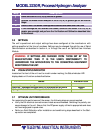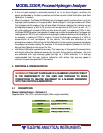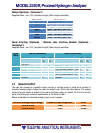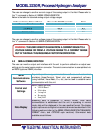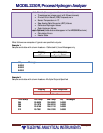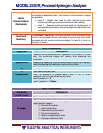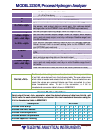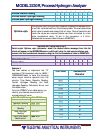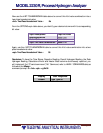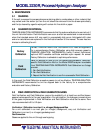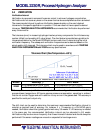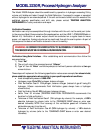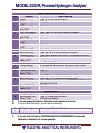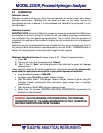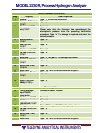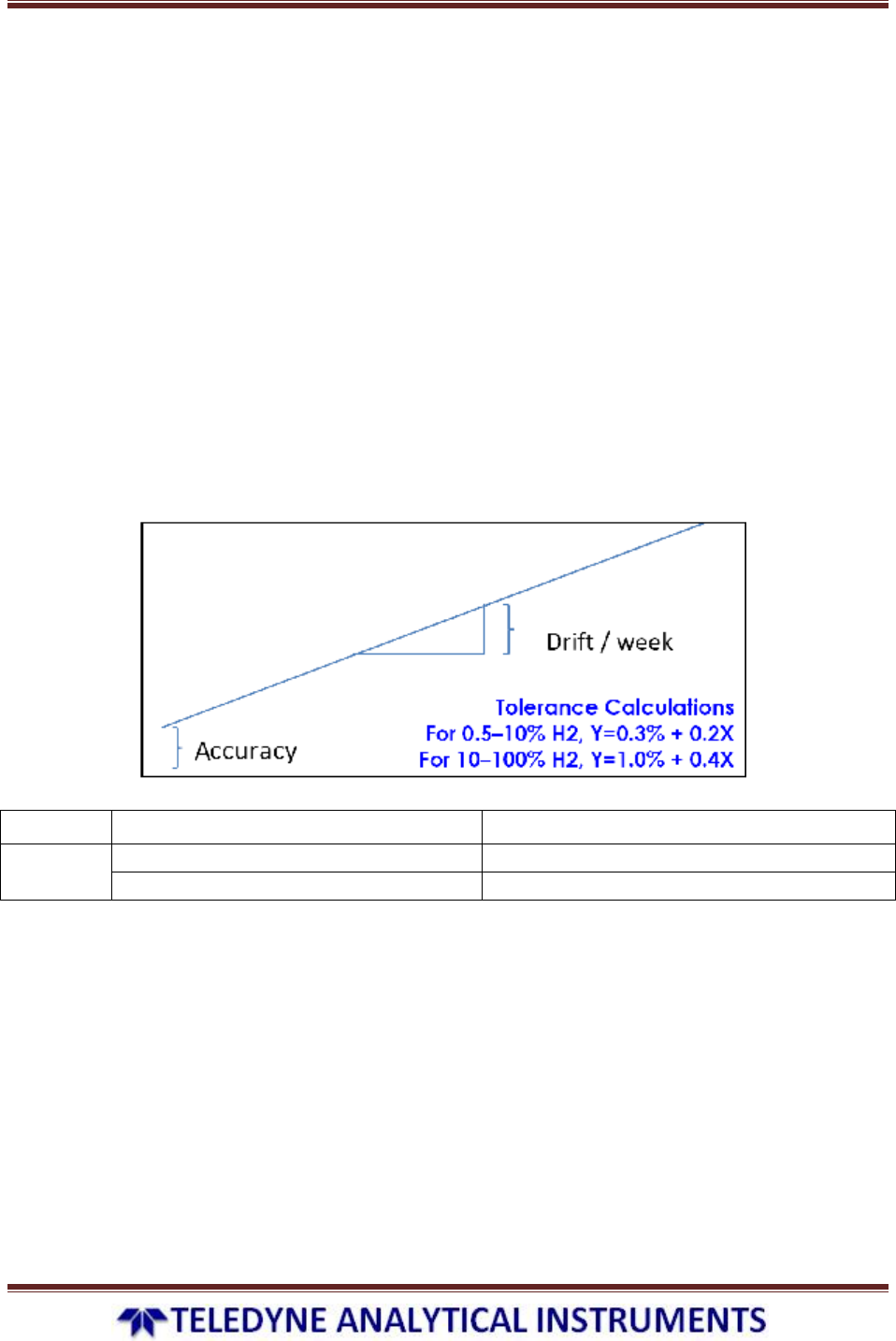
MODEL 2230R, Process Hydrogen Analyzer
Page 21
5.4 VERIFICATION
Verification Interval
Verification is a process to compare the sensor output to a known hydrogen concentration.
Verifications do not cause any wear on the sensor and can be accomplished as often as desired.
The recommended interval to perform Verification depends solely on the user’s desired
tolerance for the specific application in question. If the user does not have a specific desired
tolerance, TELEDYNE ANALYTICAL INSTRUMENTS recommends that Verification be performed
every three months.
The tolerance (error) in measuring hydrogen has two primary components: the initial accuracy
number (offset) and a weekly drift value (slope). The chart below is provided as a guideline for
tolerance estimation for the Model 2230R and can be a useful tool in determining the initial
verification frequency. The subsequent verification frequencies can be decided based on the
actual weekly drift observed. The tolerance chart may be used in accordance with TELEDYNE
ANALYTICAL INSTRUMENTS Model 2230R accuracy specifications.
Tolerance Chart (Gas Temperature <65°c)
Number of Weeks after Field Calibration, X
Model Accuracy(*): Drift/week:
2230R
± 0.3% absolute for 0.5 to 10% H₂ ± 0.2% absolute for 0.5 to 10% H₂
± 1.0% absolute for 10 to 100% H₂ ± 0.4% absolute for 10 to 100% H₂
* Sensor performance specifications are only valid for units configured for a maximum 65°C dry
process stream temperature. All figures assume pressure compensation, operating in ambient
that do not contain Oxygen and are in addition to any errors in the gasses used. The accuracy is
specified for serial port output only.
The drift chart can be used to determine the maximum recommended Verification interval to
maintain a required level of accuracy. For instance, if ± 1% accuracy in a 5% H2/N2 gas is
needed; Verification should be typically performed every 3.5 weeks. If ± 2% accuracy is needed
in the same gas, the recommended Verification interval can be extended to 8.5 weeks.
Verifications may be done more frequently than these intervals if desired and should always be
performed if the sensor readings are unusual or suspected to have large errors.



